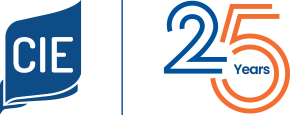Treading the footsteps of my beloved grandparents in their paths of cultivating education in the New Territories of Hong Kong — by Dr. Miriam Lau, Division of Arts and Languages
Keywords: Public schools, village schools, history of Hong Kong education, Ping Yeung, travel notes
Accepted: June 6, 2025; Published online: June 17, 2025; Published: June 27, 2025
On a breezy summer day in May, I had driven to Ping Yeung Village (Photo 1), which is in Fanling of the New Territories in Hong Kong. As I was crossing the tunnel, I excitedly envisioned the five people who were awaiting me in front of Ping Yeung Public School (坪洋公立學校). I had only met one of them, who was Mr. Stephen Yip Yu-hin (葉裕顯), an alumnus from Ping Yeung who graduated from the 11th cohort in 1974 (Photo 2). It was through the introduction of my father that I became acquainted with Stephen in April and that he was among the first alumni with whom I had shared my idea of digitizing village schools in Hong Kong. The rise and fall of private village schools in Hong Kong had been an underexplored dimension in the education history of Hong Kong. Nevertheless, they had contributed an important role in cultivating education for students residing in remote places in the city, especially before the nine-year compulsory education was mandated by the British colonial government in 1978. With the government’s introduction of “The Northern Metropolis” (北部都會區) in the New Territories, I find this a particular timely moment to document the historical archives of village schools before they are demolished, as another village school, the Sze Shan Public School (四山公立學校) in Cha Kwo Ling Village (茶果嶺村) had been sadly torn down recently on 14 May 2025. With this digitized project in mind, I had met with Ms. Yvonne So in March, who is the digital scholarship manager from the Digital Initiatives & Research Cluster at the Hong Kong Baptist University Library, of which I am much grateful to her for her invaluable advice on my proposed project. I would also like to credit my sister, Dr. Prudence Lau, Associate Professor from The Education University of Hong Kong for devising a remarkable project title for us tentatively known as “A Tale of Two Village Schools”. This article is a sequel to an earlier article that I had published in Punctum last year (see volume 2), which was titled “A personal memoir of Ping Yeung Public School.”
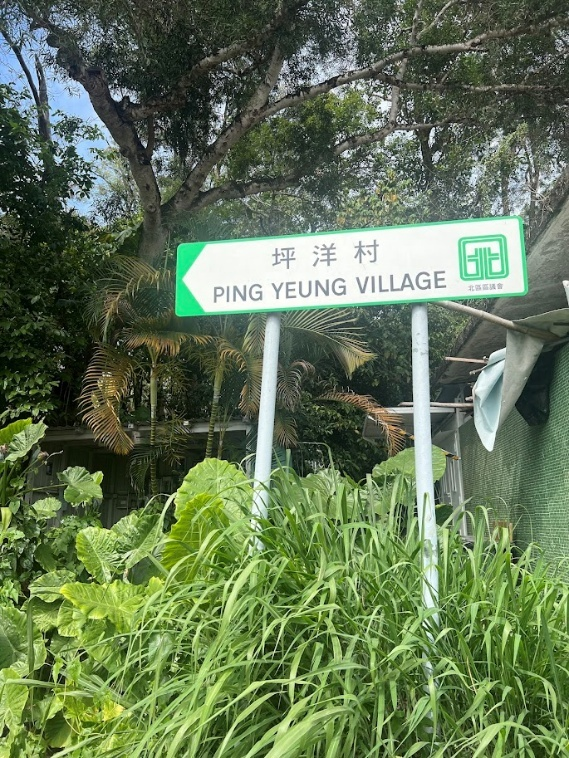
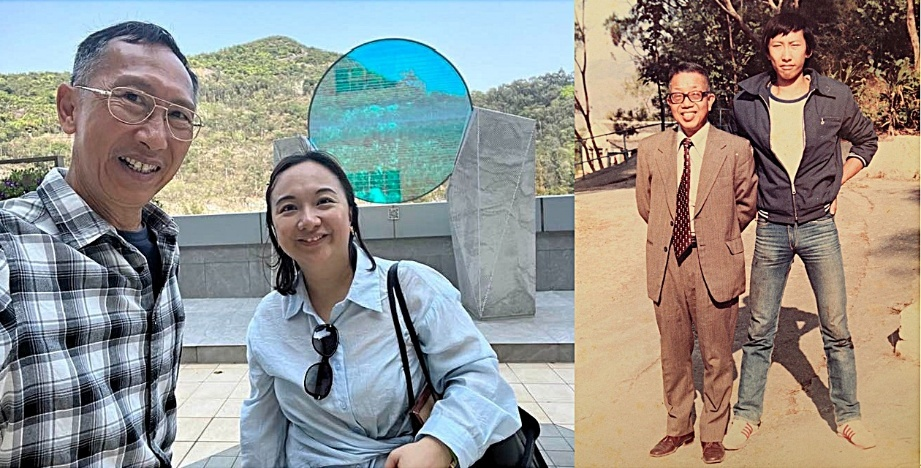
First Checkpoint: Ms. Lai Yuk-tim’s mansion in Ping Yeung
The first checkpoint of my homecoming journey was Ms. Lai Yuk-tim (黎玉甜)’s large and beautiful mansion in Ping Yeung that consisted of an outdoor garden with various fruit trees. Ms. Lai had been a Chinese teacher at Ping Yeung for 40 years, from 1957 until her retirement in 1997. My maternal grandfather, Mr. Kwan Shek-hong (關錫康), is still affectionally known as “Principal Kwan” (關校長) by inhabitants of Ping Che (坪輋) today. As he had been the second principal of Ping Yeung from 1965 to 1982 for 17 years, both he and Ms. Lai had known each other for a long time and had been great friends apart from being colleagues. This was my first time meeting Ms. Lai, and when she first saw me, she exclaimed,
“I know you! You are Lau Leung Che (劉亮之)!”
“How do you know?”
“Your grandfather had been very close to me! He gave me your photo when you were a baby.” And he said, “don’t let others know, because I only gave this to you.”
For the next two hours, seated at a round table with Ms. Lai and five alumni (Photo 3), we arrived at a full circle. Above us was a large mirror with words imprinted, “a gift to Mr. Chan Yau-choi 陳有才”, who was the founding principal and later superintendent of Ping Yeung. Chan Yau-choi was Ms. Lai’s father-in-law, and one can tell by the surname of Chan that they are the village’s original inhabitants. Ms. Lai recalled that Ping Yeung Public School was very popular during the old days, and that even residents from Shenzhen would send their children here. At that time, the class size was capped at 45 students per class. However, as the school would like to accommodate more village students to have an opportunity for education, the class sizes maintained at 47 students per class. Whenever the school janitor saw a red Volkswagen coming near the campus, which belonged to an official from the Education Bureau, he would immediately run to notify the teachers, and the teachers would ask a few students to hide in the kitchen. Ms. Lai emphasized that this “practice” had been made known to parents who, despite the above inconvenience, still wanted to admit their children to Ping Yeung.
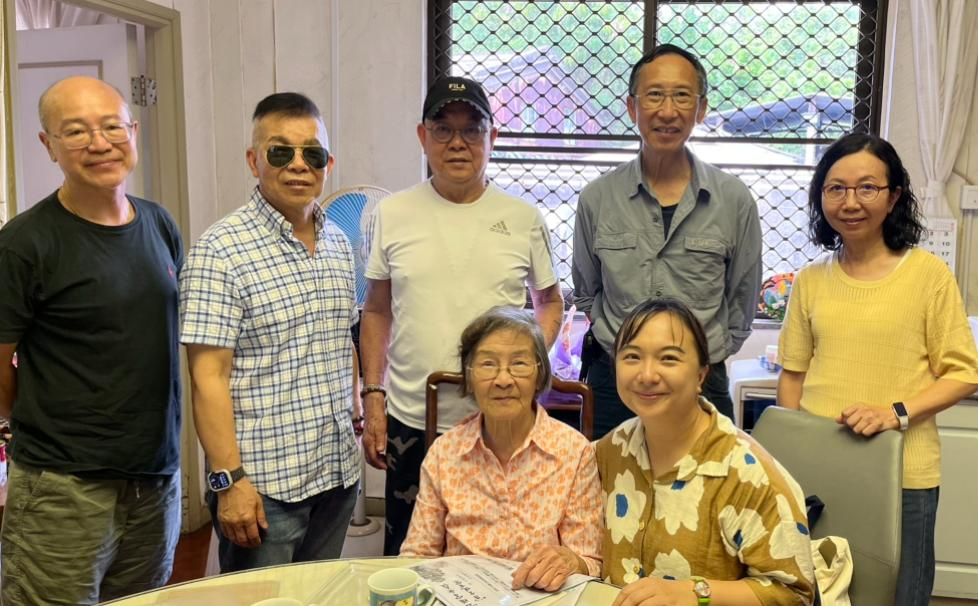
(from far right to left, Ms. Kwong Yuk-lin 鄺玉連 and Mr. Stephen Yip, both graduates in 1974, and Mr. Chan Yick-fong 陳奕芳, graduate of 1967; Mr. Chan Sing-ping 陳新平, graduate of 1969; and the eldest son of Ms. Lai, Mr. Chan Foo-chung 陳富忠, who was also an alumnus of Ping Yeung)
Second Checkpoint: Kau Kee Store (九記士多)
We had bidden farewell to Ms. Lai after 1 pm in the afternoon. As I was quite hungry, I suggested, “how about having lunch at Kau Kee Store?” Kau Kee Store is one of the very few tea restaurants in the district. It was a landmark for going to my grandfather’s school. If you come by 52K minibus from Fanling MTR station, you will give the driver a shout: “Stop at Kau Kee (九記有落)”. Besides having a nice bowl of meat ball noodles and iced lemon tea (with less ice), I was pleasantly surprised when the current owner of the restaurant, Ms. Cheung Tze-kun and her sister, Ms. Ivy Cheung, told me that they were former students of my maternal grandmother’s kindergarten, Tin Chun Kindergarten 天真幼稚園 (Photo 4). They said, “I know your grandmother – ‘Ms. Ho’ (何老師).” I will return to this kindergarten in my last checkpoint.
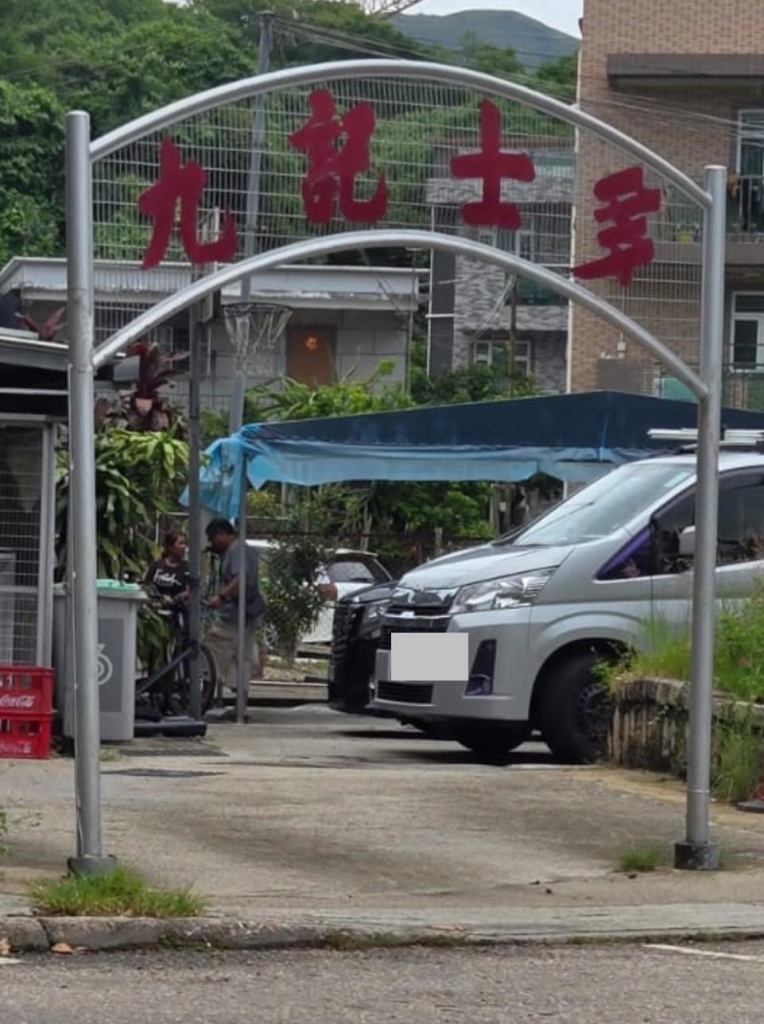
Third Checkpoint: Ping Yeung Village Office (坪洋村公所)
After lunch, we headed to Ping Yeung Village Office (Photo 5) to look at the archival records of the school. With great thanks to Mr. Chan Yick-fong 陳奕芳, a graduate from the 4th cohort in 1967 and a former chairperson of the Village Council, when the school was forced to cease operation in 2006 due to insufficient enrolment, he took the most valuable photographs and trophies from the school hall and kept them safely at the Village Office. Also, thanks to Mr. Chan Sun-gui 陳新貴1, who although he is now residing in England, had put us in touch with Mr. Chan Yick-fong when we were attempting to locate the archival records of the school. I must also thank Stephen and his wife, Marina, who helped us photograph every trophy and carefully scanned the photographs back home. Below is the photo of the 11th cohort graduates (Photo 6), and it would be interesting to make a comparison with Photo 3 above.
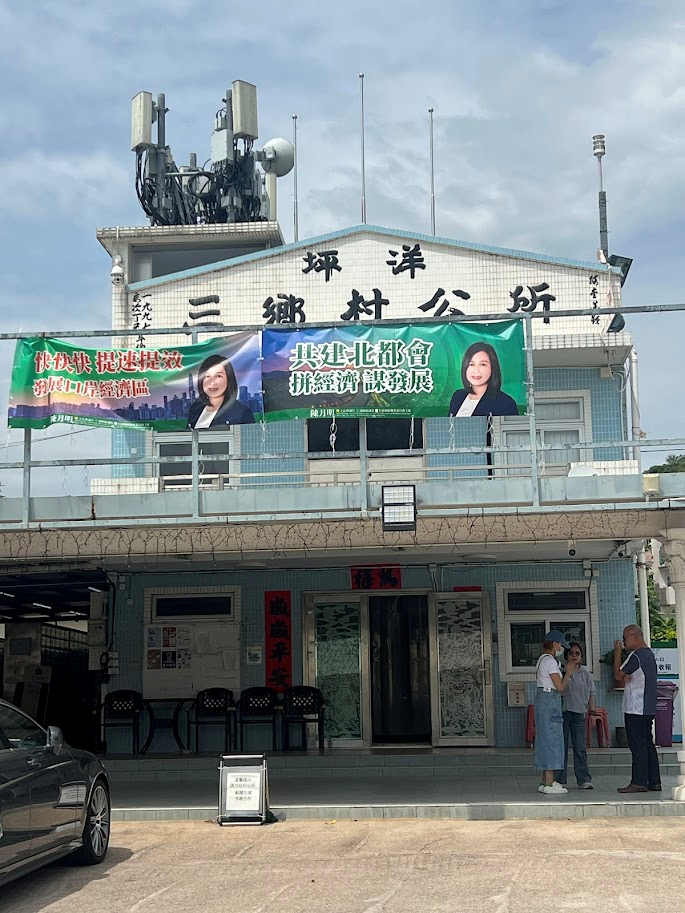
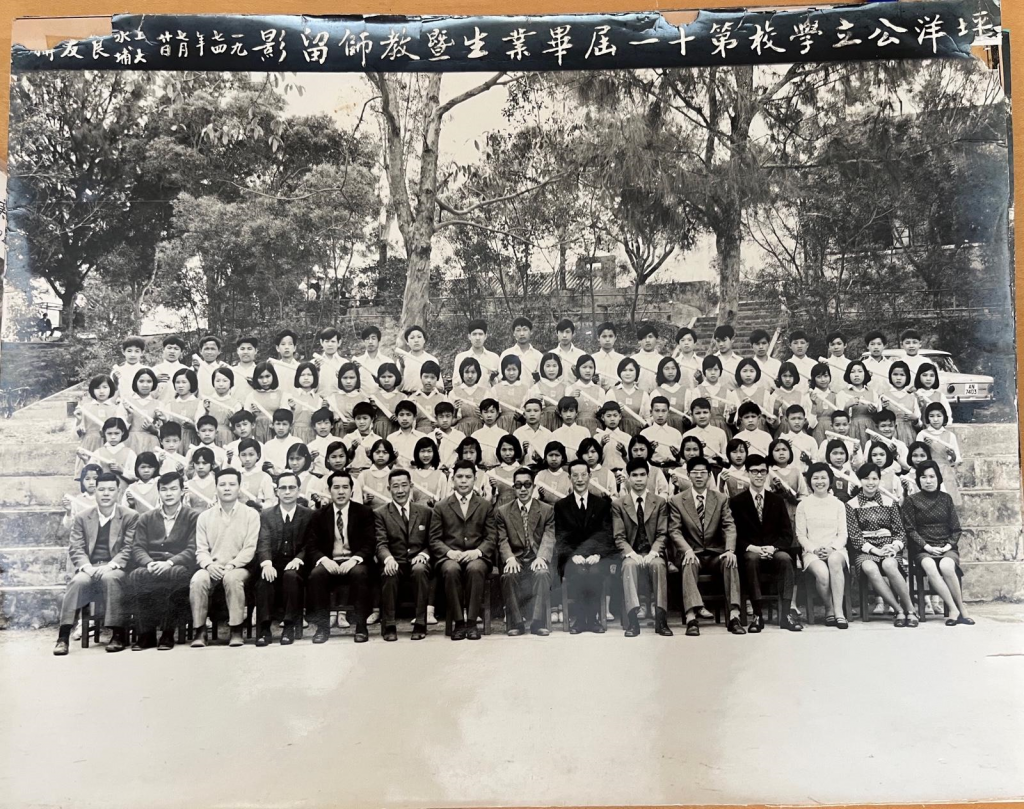
Fourth Checkpoint: Ping Yeung Public School (坪洋公立學校)
Here comes to our beloved Ping Yeung Public School, where Principal Kwan had been a very spiritual symbol. I have come across far too many alumni, who told me the following:
“Ping Yeung would not be Ping Yeung without Principal Kwan!”
“In the past, the school was in a very poor state and was rumored to have been a burial mound. Principal Kwan led us to build the basketball court and the school hall together.”
“Before our entrance exams for secondary school, Principal Kwan gave us free tutorial lessons every Sunday – yes, every Sunday!”
“Your mother also came to give me tutorial lessons!”
Unfortunately, we were not able to enter Ping Yeung this time as it was barricaded as a piece of government land (Photo 7), but this would not stop us from exploring the outskirts of the school. Stephen pointed to an old door and said, “This was the main entrance of the school!” (Photo 8). We then tried walking around the fences. Now from where Stephen was standing, he exclaimed, “This was the stage before the school hall was constructed!” (Photo 9). As a side note, a photo published online by the Education University Library (Photo 10) proved this2: Students attentively listen to an assembly on stage, in which my grandfather was standing on the far left. Stephen also recalled there was a zoo in the school with monkeys and birds. I began to wonder whether this painting of a monkey by my grandfather was sketched at Ping Yeung (Photo 11).
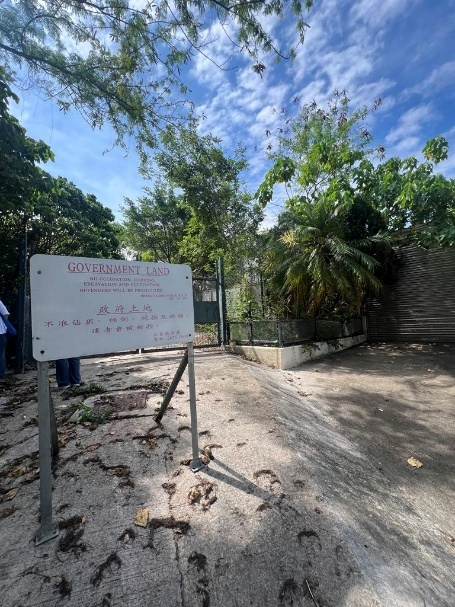
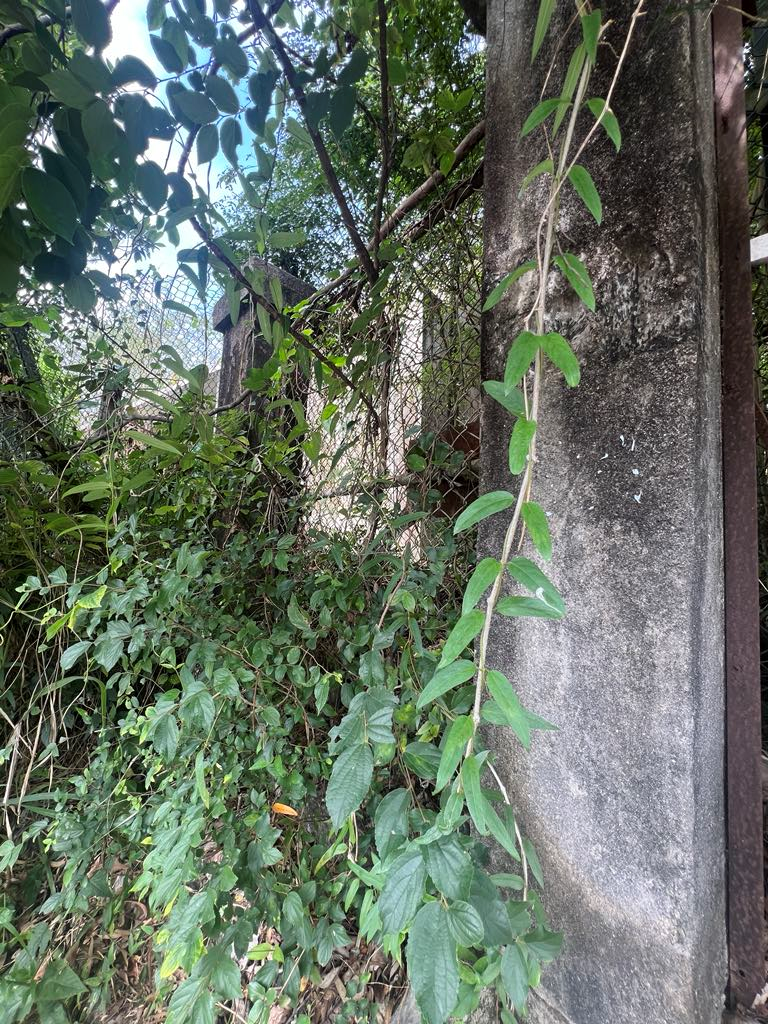
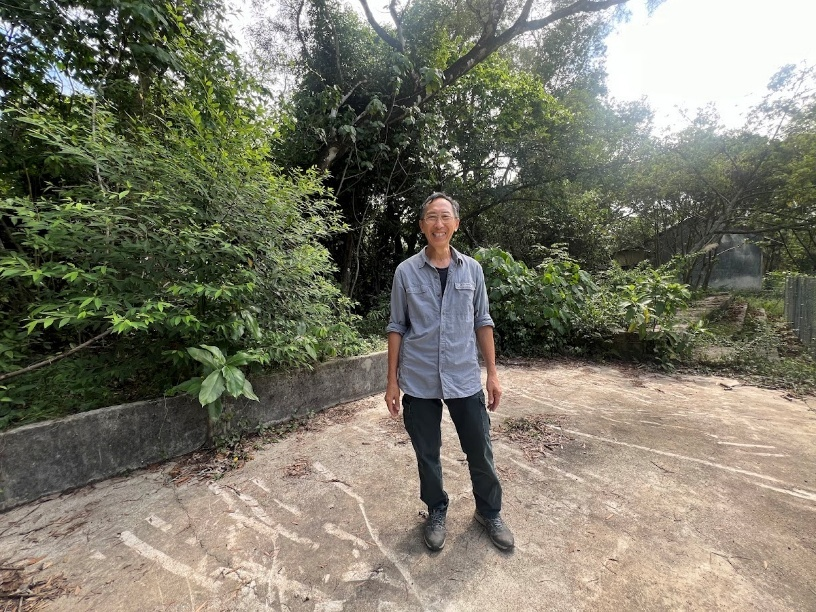
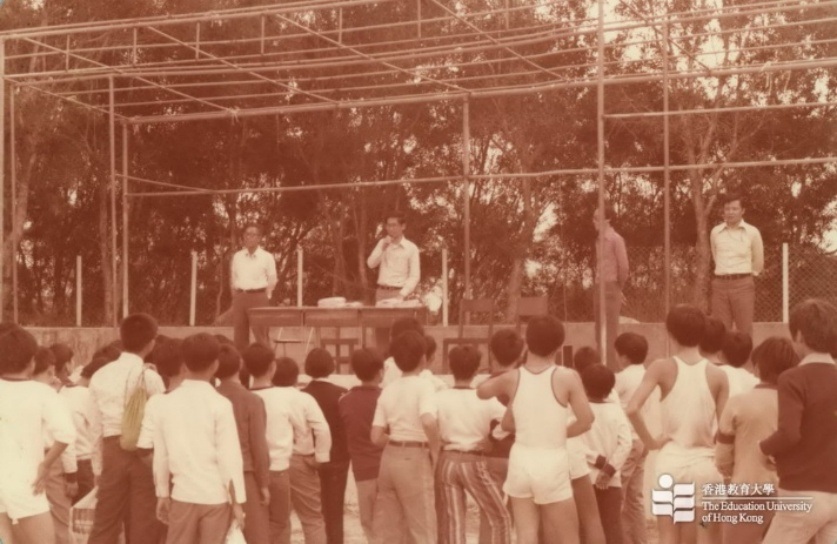
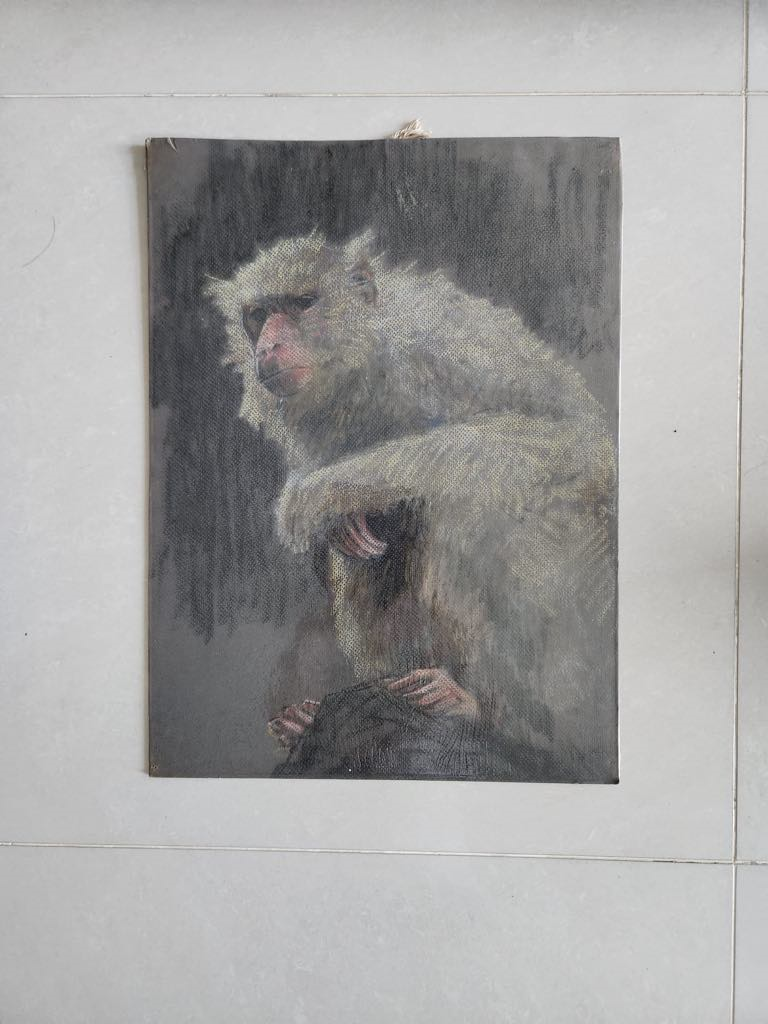
Final Checkpoint: Tin Chun Kindergarten 天真幼稚園
Coming to my final checkpoint is Tin Chun Kindergarten, which was run by my grandmother, Ms. Ho Woon Yin 何煥賢. According to an alumnus, Ms. Kwong Yuk-lin, my grandfather had envisioned the problem of insufficient student enrolment back in the 1970s, during which a lot of young people in the village had started to emigrate overseas. Therefore, my grandmother ran Tin Chun Kindergarten, and most of its graduates would articulate into Ping Yeung Public School for primary schooling. Unfortunately, there have been almost no archival records of the kindergarten (as the site of the kindergarten does not exist anymore), so I would like to continue digging out its history in honour of my grandmother, who was the most loving wife, mother, and grandmother, and who had always quietly supported my grandfather in many ways (Photo 12). If there had been no Tin Chun Kindergarten, Ping Yeung Public School would have been forced to close due to insufficient enrolment much earlier before its official closure in 2006. Therefore, the glorious days of Ping Yeung, such as its achievements of winning champions of table tennis and basketball competitions in the Northern District of Hong Kong, should be credited to Tin Chun for its nurturing of young children to some extent. Almost the only clue I had of this forgotten piece of important history is that the legislative council member, Hon. Chan Yuet-ming, a graduate of both Tin Chun and Ping Yeung, told me that the kindergarten had offered K1 to K3 classes, and that my grandmother loved wearing qipao3. This makes sense to me because at one point of my life, I often wore qipao to work, which made people wonder whether there was any special occasion alongside the usual teaching day. On my way back home, I asked Ms. Kwong, whose siblings had graduated from Tin Chun, to show me where the kindergarten was. She said that it was next to the Long Wai Restaurant, and on its sidewalk (Photo 13) is the path leading up to Tin Chun Kindergarten (Photo14).
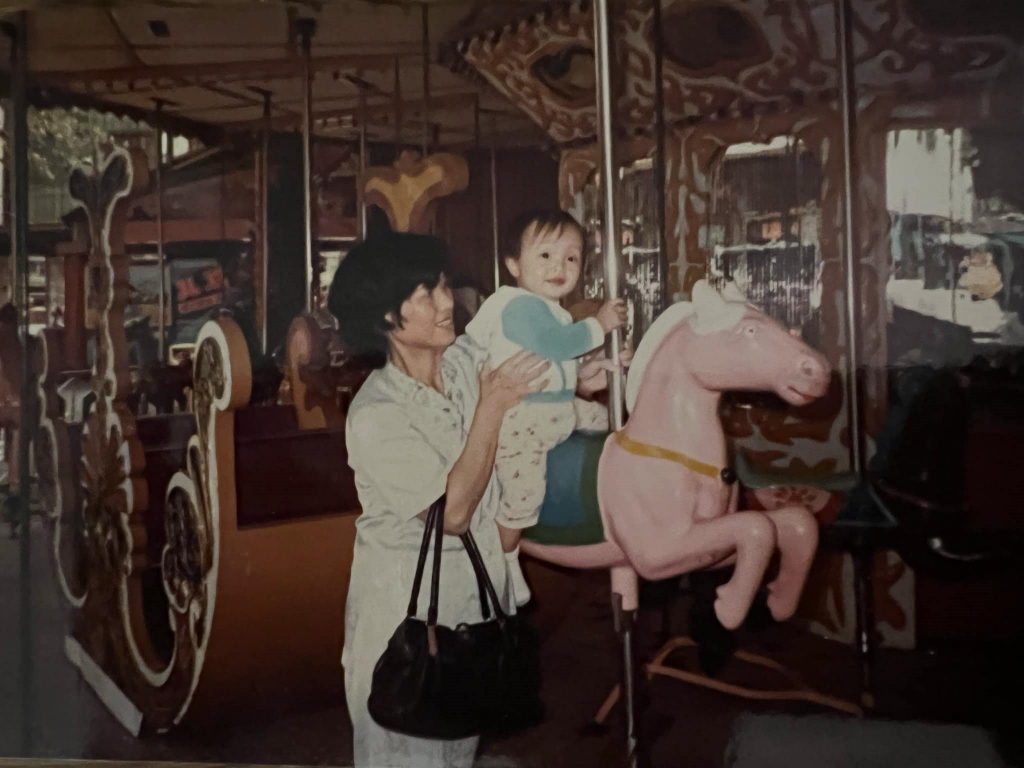
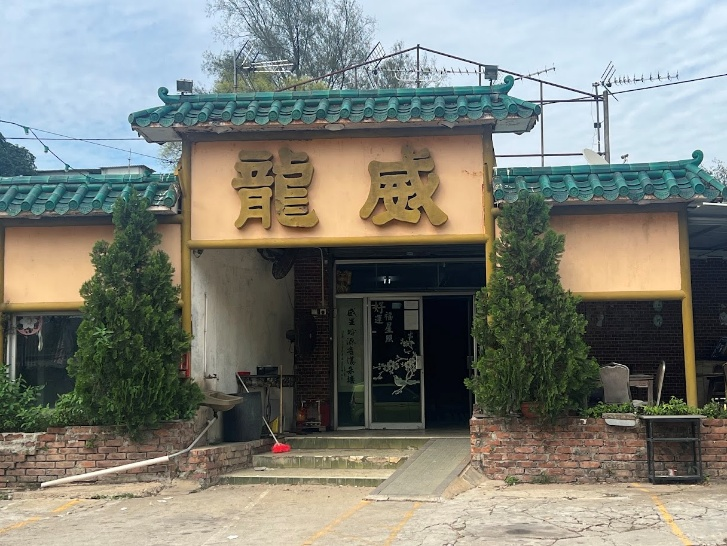
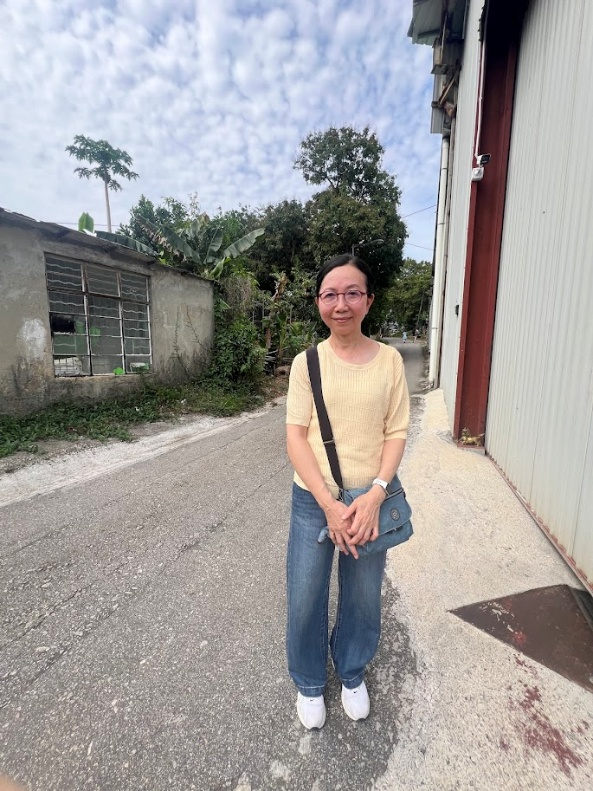
Homecoming
After visiting all five checkpoints above, I have acquired a closer picture of how my grandparents ploughed the seeds of education in Ping Che of Fanling from the 1960s to the 1980s. Although it is devastating to have lost them both in 2005 and 2006 respectively, they are still spiritually with me all the time. I am immensely proud of being their granddaughter (Photo 15), and I am determined to continue the family tradition of educating young people and impacting their lives.
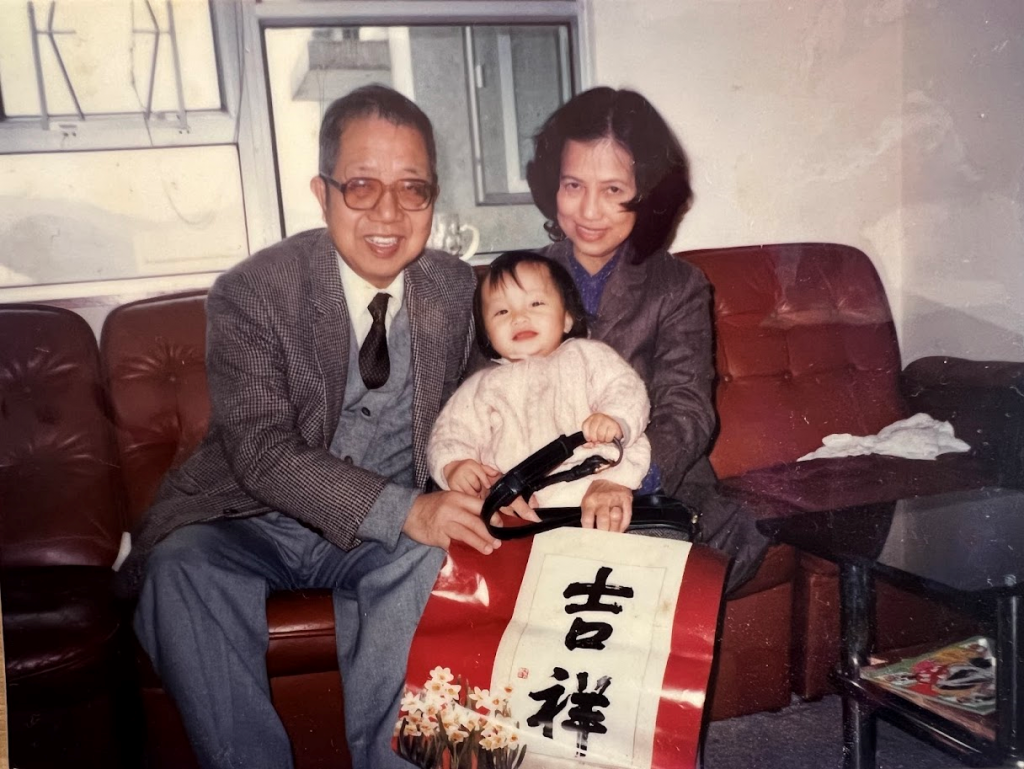
Acknowledgements
In no particular order, I would like to thank Ms. Lai Yuk-tin, Mr. Stephen Yip, Ms. Marina Pang, Ms. Kwong Yuk-lin, Mr. Chan Yick-fong, Mr. Chan Sing-ping, Mr. Chan Sun-gui, and Mr. Chan Foo-chung for their contributions to this article.
[1] Chan Sun-gui had been the Chairman of Manchester Chinatown Business Association from 2004 to 2019, and, at present, there is a large group of Ping Yeung alumni residing in Manchester of the United Kingdom.
[2] “Photo of Ping Yeung Public School.” Hong Kong Village Schools. Hong Kong Education Image Database, The Education University of Hong Kong, https://imagedb.museum.eduhk.hk/en/items/e6a42365. Accessed 30 May 2025.
[3] See Vol. 2, Punctum, https://www.cie.hkbu.edu.hk/the-punctum/blog/2024/05/01/a-personal-memoir-of-ping-yeung-public-school-by-dr-miriam-lau-division-of-arts-and-languages/


